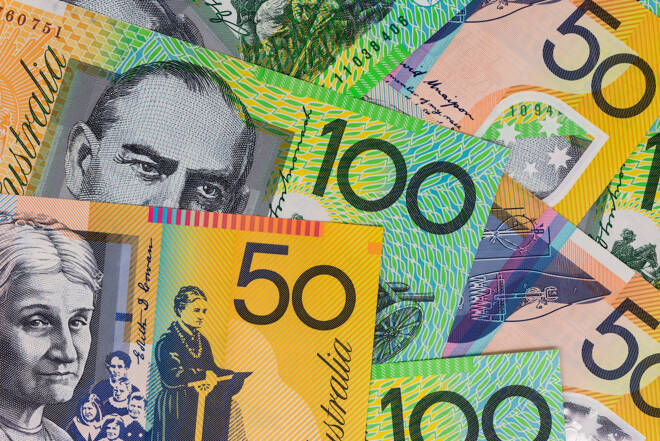Advertisement
Advertisement
AUD to USD Forecast: RBA’s Battle Against Inflation vs. US Economic Heat
By:
RBA's hawkish stance on inflation and Fed's potential rate hike create a financial crossroads, impacting consumer spending and inflationary pressures.
Highlights
- The AUD/USD tumbled by 0.73% on Wednesday, ending the session at $0.63083.
- On Thursday, the RBA reaction to the Q3 inflation numbers will impact the AUD/USD.
- Later in the Thursday session, US Q3 GDP numbers need consideration.
Wednesday Overview
On Wednesday, the AUD/USD slid by 0.73%. Reversing a 0.31% gain from Tuesday, the Aussie dollar ended the day at $0.63083. The Aussie dollar rose to a high of $0.63997 before falling to a low of $0.63053.
RBA and Australian Inflationary in the Spotlight
On Wednesday, the Aussie dollar tested buyer appetite at $0.64 before succumbing to a spike in US Treasury yields. Hotter-than-expected Australian inflation figures fueled bets on an RBA rate hike.
On Thursday, investors must consider any RBA reaction to the inflation figures. A hawkish RBA Assistant Governor Michele Bullock suggests a willingness to lift the cash rate higher to tackle inflation.
Higher interest rates impact disposable income, curbing consumer spending and demand-driven inflationary pressures.
On Thursday, RBA Assistant Governors Michele Bullock and Christopher Kent are on the calendar to speak.
US GDP, Jobless Claims, and Durable Goods Orders in Focus
US Q3 GDP figures will draw investor attention on Thursday. The markets expect the Fed to leave interest rates unchanged in November. However, the fear of a December rate hike lingers. A hot US economy could give the Fed hawks reason to lift interest rates higher. Economists forecast the US economy to expand by 4.2% in Q3 vs. 2.1% in the previous quarter.
Higher interest rates impact borrowing costs and disposable income, forcing consumers to curb spending. A downward trend in spending would ease demand-driven inflationary pressures.
Other economic indicators include the US jobless claims and durable goods orders. A slump in core durable goods orders and a jump in jobless claims would fuel Fed policy uncertainty before inflation numbers on Friday.
Short-Term Forecast
US Q3 GDP and September inflation figures will likely dictate near-term AUD/USD trends. The US economy remains robust and capable of absorbing a Fed rate hike. In contrast, an RBA rate hike could tip the Australian economy into recession territory.
AUD/USD Price Action
Daily Chart
The AUD/USD remained below the 50-day and 200-day EMAs, affirming bearish price signals.
A fall through the $0.62749 support level and trend line would give the bears a look at $0.62000. Hotter-than-expected US GDP numbers would likely fuel bets on a Fed rate hike and a Fed delay in cutting rates in 2024.
However, softer GDP numbers and a hawkish RBA response to the Australian inflation figures could support the Aussie. An Aussie dollar return to $0.63 would support a move toward the $0.63854 resistance level.
A 14-period Daily RSI reading of 40.63 suggests a fall to the $0.62749 support level before entering oversold territory (typically below 30 on the RSI scale).
4-Hourly Chart
The AUD/USD sits below the 50-day and 200-day EMAs, sending bearish price signals.
A drop below the $0.62749 support level would bring the trend line into play. However, an AUD/USD return to $0.63000 would give the bulls a run at the 50-day EMA. A break above the 50-day EMA would support a move toward the 200-day EMA and $0.63854 resistance level.
The 14-period 4-Hourly RSI at 37.03 indicates an AUD/USD drop below the $0.62749 support level before entering oversold territory.
About the Author
Bob Masonauthor
With over 28 years of experience in the financial industry, Bob has worked with various global rating agencies and multinational banks. Currently he is covering currencies, commodities, alternative asset classes and global equities, focusing mostly on European and Asian markets.
Advertisement
